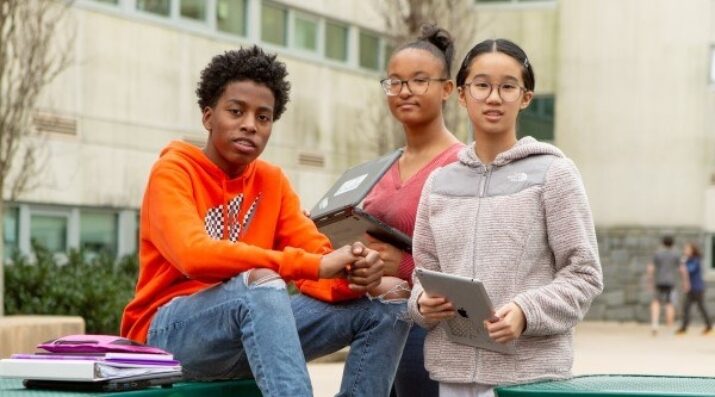How Schools Can Respond to the Student Mental Health Crisis
Topics

We’ve all had the experience of truly purposeful, authentic learning and know how valuable it is. Educators are taking the best of what we know about learning, student support, effective instruction, and interpersonal skill-building to completely reimagine schools so that students experience that kind of purposeful learning all day, every day.
Schools can take these proactive steps now to serve as psychological safe places for both students and educators throughout the year.
In this back-to-school season, our doors are reopening to welcome students who are carrying invisible backpacks full of trauma and stress responses. With all of the traumatic events happening in our world today, the most vulnerable of us—our young people—are experiencing the effects of this reality each and every day.
In President Biden’s last State of The Union Address, he made it clear that youth mental health is a priority for the Biden-Harris Administration stating “we owe them greater access to mental health care at their schools,” but what does that look, sound, and feel like?
Schools are seen as the primary source of providing wrap-around services to students whether they are equipped to do so or not. Attempts have been made to support the mental health of students—including incorporating social-emotional learning, revamping discipline practices, and hiring more clinical staff—but it still feels like it isn’t enough.
While there is no one-size-fits-all approach to helping students who are struggling with their mental health, there are proactive steps schools can take to serve as psychological safe places for both students and educators.
Moving from Self-Regulation to Co-Regulation
For example, many schools and districts believed that social and emotional learning (SEL) would be the answer to behavioral problems by teaching students how to self-regulate, how to become more self-aware, socially-conscious, and make better decisions. But social emotional learning can give false hope, specifically around behavior. Brain development can not be rushed. You can spend all day teaching students how to self-regulate, but—because of where they are developmentally or due to the effects of trauma and stress on the brain—they may have limited access to the part of the brain (the dorsolateral prefrontal cortex, or DLPFC) responsible for self-regulation. Instead, we should teach young people skills of self-regulation while simultaneously teaching adults the art of co-regulation.
Providing quality professional development and support to educators when a student is unable to access their taught skill of self-regulation can be a game changer.
Addressing Emotional Health and Academics Together
School districts must also think strategically about behavioral support. The student who struggled last year may still be struggling this school year, and we should not wait for their behavior to reveal this need to us again. Now is the time for schools to develop methods to intersect emotional health with academic health.
There are times when academic and behavioral conversations are held separately but research shows us that students who have three or more traumatic experiences have six times the rate of behavioral problems, five times the rate of attendance problems, and three times the rate of academic failure. This means the conversations need to happen together, especially for students who are having challenges in all or one of these three areas. Small shifts can be made to traditional Admission, Review, and Dismissal (ARD) meetings and Behavioral Intervention Plan (BIP) meetings.
Momentous Institute, a community mental health nonprofit where I used to work, collaborated with educational and mental health professionals to create the Strategic Intervention Model (SIM) which can be downloaded for free. The SIM manual can be used on its own to amplify already existing protocols in your school environment.
Partnering with Community Mental Health Services
Schools can not support the mental health of all students alone, nor should they have to do so. Schools can identify community mental health agencies, mentoring programs, and after-school programs that they can partner with throughout the school year to be proactive in addressing school-wide mental health concerns. There is no need to wait until a crisis happens to create a community plan of support.
Schools are a part of communities, and in order for us to tackle the youth mental health crisis, we have to plan ahead and work together. Both our students and educators need us and deserve better.
This article originally appeared on NewThinking on August 7, 2023. Photo at top by Allison Shelley for EDUimages, CC-BY-NC 4.0.




